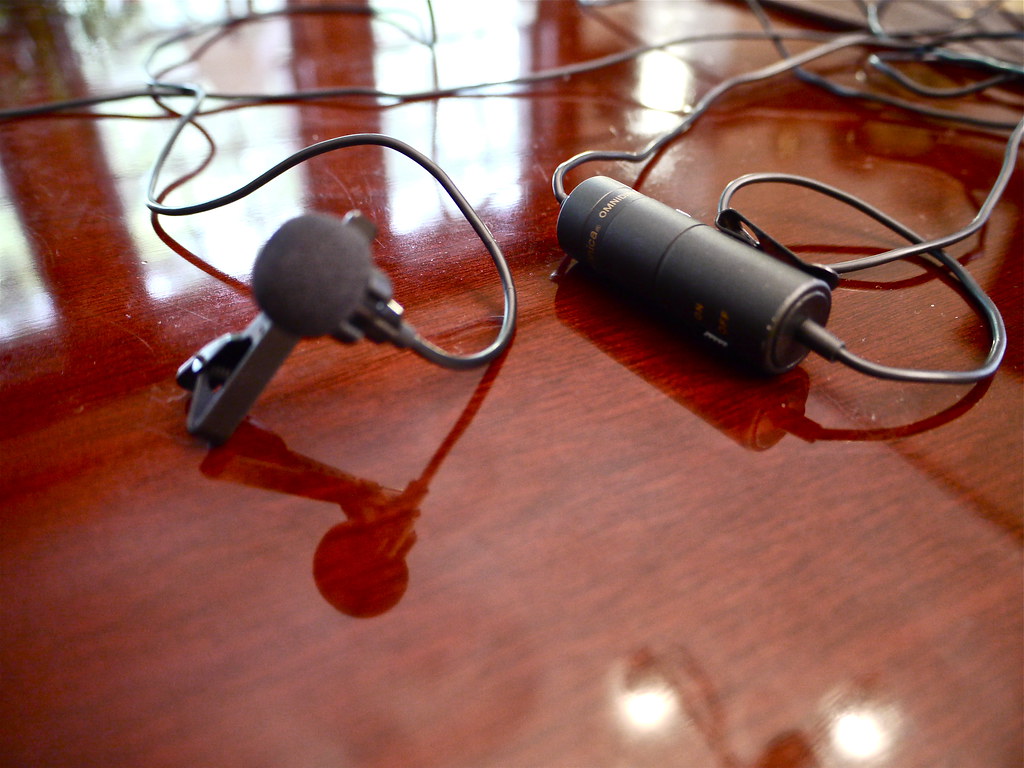When it comes to videos for learning, audio is even more important than what appears on the screen. A viewer can tolerate a grainy image, but introduce an audio problem such as static or clipping and their attention can be completely disrupted. In a controlled environment, such as Media Production’s UCreate – a one button studio – capturing quality audio is simple as it’s built right into the room and system itself. Recording in other environments, however, can have some unexpected results. Whether recording in a classroom, an office, or at home there may be a video you watch after recording where you realize that the audio is not up to your standards, and unfortunately, it’s something that only reveals itself after the fact. I can still remember sitting in the Neatby Timlin theatre for the screening of student video projects, and when my video appeared there was no sound at all. It was a different problem, but ever since then audio has been front of mind for me in creating and distributing media.
Panopto’s editor isn’t fancy, or especially powerful, and does not even include a specific audio editing tool. However, we can replace the audio track wholesale. To do this we will need an audio source in addition to the one from our originally captured video. If you are recording in the classroom, this second source might come from a phone recording. If you have a lapel microphone, you can plug that into your phone or similar device, start recording, and the microphone will come with you everywhere in the classroom. Turning to face the board, will be the same levels as facing your class in this case and its close proximity means it can pick up what you need it to. Or, if you are recording in a Zoom session, you could record audio in the background using something like Audacity or similar program. The recommendation here is to still use something like a lapel microphone, or a headset to capture the audio. If you use a stand-alone microphone, or the internal one in your laptop or desktop, then something as simple as looking down or at your second monitor while speaking can disrupt the audio recording. In the worst case scenario, rerecording the audio is an option, but capturing a second audio stream at the time of recording is much less work.
Once you finish your recording session, and the separate audio stream you might find you don’t even need the audio stream. Depending on the nature of the recording, you may wish to consider sharing this audio only version with your students if the design of your class fits a podcasting style of content delivery. In the case you detect a problem with the audio in your video, you can use the second audio stream to replace the erroneous audio at the same time you upload the video to Panopto.
Sample Video with Audio Static
In this sample video, you can hear that the audio has unpleasant static that would be very distracting to a viewer.
Using the Backup Audio Recording Instead
Normally when uploading a video to Panopto, you might use the Create button and upload media.
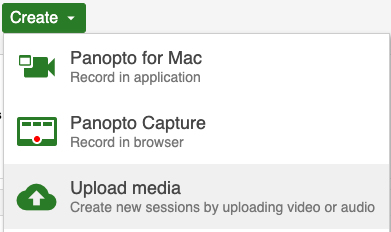
Because we want to use both an audio file, and a video file, instead we will start with Create and Build a session.
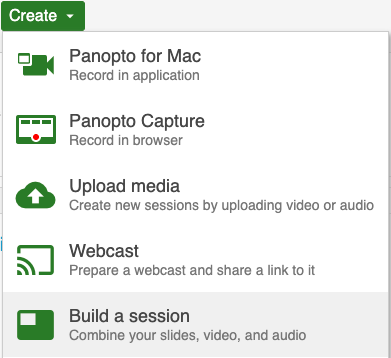
Give the session a title, and select the folder you want the video to be in. In his case, I’m leaving it in “My Folder”. Select Create when you’re ready to proceed.
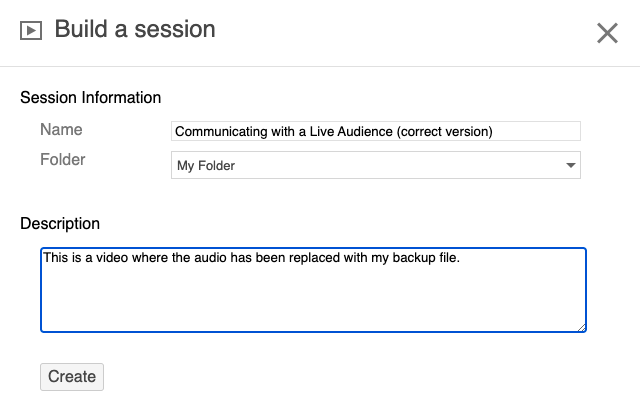
You’ll be asked to upload the Primary Stream. This is where we want to upload the audio file. This will make the clean audio file take priority over the audio that is attached to the video file.
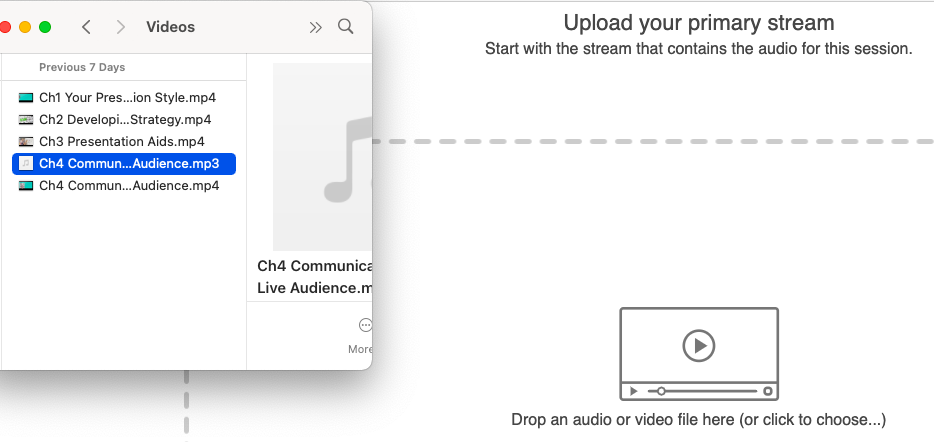
Once the audio file has uploaded and been processed you can verify it works by clicking the play button in the editor. Next we need to add the video file. Select + Add Stream to begin.

Here we are going to choose the video file as a secondary video stream, and upload it.

Once it is finished pocessiing you can preview it in the editor and don’t forget to Apply the changes you’ve made. Now when you embed the video in your course the clean audio should be the one that plays like in this sample below.
Additional Resources
For more tutorials and information about Panopto, see:
- USask Knowledgebase (login required)
- Panopto Documentation
Video, Communicating with a Live Audience, by the Olds College OER Development Team used under a CC-BY 4.0 international license.
“Audio Technica ATR-3550 Lavalier Omnidirectional Condenser Microphone” by stevegarfield is licensed under CC BY-SA 2.0


